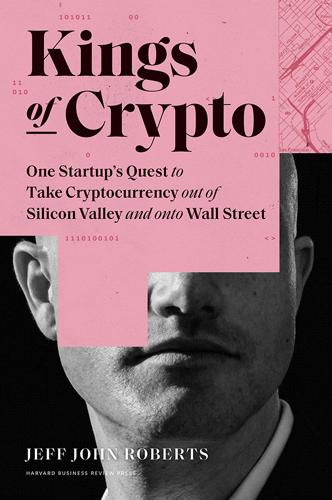
Kings of Crypto: One Startup's Quest to Take Cryptocurrency Out of Silicon Valley and Onto Wall Street
by
Jeff John Roberts
Published 15 Dec 2020
If the company wanted to scale—Silicon Valley–speak for growing into a colossus—Brian and Fred needed venture capital firms to rain down millions of dollars. And making it rain cash required Coinbase to show it was moving “up and to the right.” For venture capitalists, the phrase is a near-holy invocation. Up and to the right. It means a startup is adding both users and revenue month after month, making a beautiful diagonal line on their PowerPoint slides. Since late 2012, Coinbase had been up and to the right. On three occasions, Brian and Fred had taken their beautiful line to Paul Graham, the cofounder of Y Combinator and their rabbi of fundraising. The first two times, Graham had told Fred, “You are not ready, my son.”
…
The first two times, Graham had told Fred, “You are not ready, my son.” On the third occasion, he stared at Coinbase’s performance—still growing up and to the right—and gave his blessing for a Series A funding round, introducing Brian and Fred to his well-heeled network of money men. But despite Graham’s endorsement and Coinbase’s growth numbers, the venture capital world—normally so risk-loving—was still skittish. Most VCs didn’t understand bitcoin, and many of those who did saw something that would invariably be snuffed out by law enforcement. The biggest exception was Fred Wilson, who persuaded the other partners at Union Square Ventures to take a trip to San Francisco for a serious look at Coinbase’s potential.
…
Brian and Fred would instead have to make their case to Wilson’s skeptical compatriots, including Brad Burnham, the cofounder of Union Square Ventures and an open skeptic of bitcoin. “So fucked,” thought Brian, again. Only half-fucked, it turns out. Brian and Fred’s presentation, their clean-cut appearance, and Coinbase’s up-and-to-the-right trajectory persuaded the Wilson-less Union Square Ventures team to buy in—at $2.5 million. They’d have to find the other $2.5 somewhere else. For that, a white knight appeared in the form of Micky Malka, who ran the VC firm Ribbit Capital, and for whom bitcoin was deeply personal. Malka, a tall man with protruding ears and close-cropped hair, speaks with a heavy Latin accent of his native Venezuela, where he had seen firsthand how a venal, inept government could debase a money supply.

Getting Started with D3
by
Mike Dewar
Published 26 Jun 2012
We shall simply have the tool tip appear on mouseover: g.selectAll("circle") .on("mouseover.tooltip", function(d){ d3.select("text#" + d.line_id).remove(); d3.select("#chart") .append("text") .text(d.late_percent + "%") .attr("x", time_scale(d.time) + 10) .attr("y", percent_scale(d.late_percent) - 10) .attr("id", d.line_id); }); Nothing terribly new here: we append an SVG text element just up and to the right of the circle and set the id of the text to the line_id. The one odd-looking line here is first line in the mouseover callback; before we add a new tool tip, we remove any tool tips that already exist on that line. This is good practice if we know we only ever want one tool tip on at a time, and also corrects any corner-case interaction bugs that can occur if the transition below is interrupted. On mouseout we shall fade the label out and, because it is so easy to get carried away with transitions, we shall transform the position of the label up and to the right a bit, giving the label fade a bit of drama: g.selectAll("circle") .on("mouseout.tooltip", function(d){ d3.select("text." + d.line_id) .transition() .duration(500) .style("opacity",0) .attr("transform","translate(10, -10)") .remove(); }); Here we transition to 0 opacity, transition from translate(0,0) to translate(10,-10) and then, at the end of the transition, remove the element from the page.

New Dark Age: Technology and the End of the Future
by
James Bridle
Published 18 Jun 2018
These are a recent invention, developed by NASA in response to the 1973 oil crisis and gradually retrofitted for commercial aircraft to increase fuel efficiency. They always bring to mind the epitaph of Buckminster Fuller, as written on his gravestone in Cambridge, Massachusetts: ‘Call me trimtab.’ Tiny in-flight adjustments, performed at scale. This is what we remain capable of. History – progress – does not always go up and to the right: it’s not all sunlit uplands. And this isn’t – cannot be – about nostalgia. Rather, it is about acknowledging a present that has come unhinged from linear temporality, that diverges in crucial yet confusing ways from the very idea of history itself. Nothing is clear anymore, nor can it be. What has changed is not the dimensionality of the future, but its predictability.
…
And because of where he was working and the need of researchers to share interlinked information, he tied this invention to the Transmission Control Protocol (TCP) and the domain name systems that underpin the emerging internet and – ta-da! – the World Wide Web just happened, as naturally and obviously as if it were meant to be. This, of course, is only one way of telling the story, but it tickles our senses because it makes sense: the rising arc of invention – the graph that always goes up and to the right – coupled to a personal history that leads to myriad interconnections and the spark of insight at the right moment, the right place in time. The Web happened because of the history of microprocessors and telecommunications and wartime industry and commercial requirements, and a bunch of different discoveries and patents and corporate research funds and academic papers and TBL’s own family history; but it also happened because it was Web Time: for a brief moment, the dispositions of culture and technology converged on an invention that, in hindsight, was predicted by everything from ancient Chinese encyclopaedias to microfilm retrieval to the stories of Jorge Luis Borges.
…
It used to be believed that miniaturisation would be impossible below seven nanometres, at which point electrons would be free to move through any surface via quantum tunneling; instead, future generations of transistors will take advantage of this effect to make chips the size of atoms themselves, while others predict a future of biological machines composed of DNA and custom, nanoengineered proteins. So far, so up and to the right. The miniaturisation principle, and its accompanying surge in computational power, is the ever-building wave that Berners-Lee rode through the 1960s, ’70s and ’80s, in order to bring us, neatly and inevitably, to the World Wide Web and the interconnected world of today. But Moore’s law, despite the name by which it came to be known (one which Moore himself wouldn’t use for two decades), is not a law.

From eternity to here: the quest for the ultimate theory of time
by
Sean M. Carroll
Published 15 Jan 2010
On the checkerboard, a state was a row of white and gray squares; for our billiard ball, it’s a point in the space of states—that is, the position and momentum of the ball. Take a look at the first part of the trajectory of the ball shown in Figure 36. The ball is moving uniformly up and to the right, and the momentum is fixed at a constant value, pointing up and to the right. So the time-reverse of that would be a series of positions of the ball moving from upper right to lower left, and a series of fixed momenta pointing up and to the right. But that’s crazy. If the ball is moving along a time-reversed trajectory, from upper right to lower left, the momentum should surely be pointing in that direction, along the velocity of the ball.
…
Once again, we can express this pattern in terms of evolution from moment to moment in time, with one extra thing to keep in mind: Along any single row, it’s not enough to keep track of whether a particular square is white or gray. We also need to keep track of what kinds of diagonal lines of gray squares, if any, are passing through that point. We could choose to label each square in one of four different states: “white,” “diagonal line of grays going up and to the right,” “diagonal line of grays going up and to the left,” or “diagonal lines of grays going in both directions.” If, on any particular row, we simply listed a bunch of 0’s and 1’s, that wouldn’t be enough to figure out what the next row up should look like.110 It’s as if we had discovered that there were two different kinds of “particles” in this universe, one always moving left and one always moving right, but that they didn’t interact or interfere with each other in any way.
…
Our original checkerboard A clearly had parity as a symmetry—the rules of behavior we uncovered would still be respected if we flipped right with left. For checkerboard C, meanwhile, we face a situation similar to the one we encountered when considering time reversal—the rules are not parity symmetric, since a world with only up-and-to-the-right diagonals turns into one with only up-and-to-the-left diagonals once we switch right and left, just as it did when we reversed time. Nevertheless, it looks like you could take checkerboard C and do both a reversal in time and a parity inversion in space, and you would end up with the same set of rules you started with.

The Men's Health Big Book of Exercises: Four Weeks to a Leaner, Stronger, More Muscular You!
by
Adam Campbell
Published 22 Dec 2009
That’s one repetition. T-Stabilization A • Assume a pushup position. • Your body should form a straight line from your head to your ankles. • Brace your core. B • Keeping your arms straight and your body rigid, shift your weight onto your left arm and rotate your torso up and to the right until you’re facing sideways. • Pause for 3 seconds, then lower back down to the starting position. • Rotate to your left. That’s one rep. • Continue to rotate back and forth, keeping your core stiff as you rotate from side to side. Do You Measure Up? Researchers in Finland found that people with poor muscular endurance in their lower backs are 3.4 times more likely to develop lower-back problems than those who have fair or good endurance.
…
THE BENEFIT Enhances the mobility of your neck. Thoracic Rotation • Get down on on all fours. • Place your right hand behind your head. • Brace your core. • Rotate your upper back downward so your elbow is pointed down and to your left. • Raise your right elbow toward the ceiling by rotating your head and upper back up and to the right as far as possible. • Complete the prescribed number of reps, then do the same number on your left. TIP • Bracing your abs—as if you were about to be punched in the gut—ensures that the rotation takes place at your upper back, and not your lower back. THE BENEFIT Enhances the mobility of your upper back, which can help improve posture.
…
• Brace your core, and lunge forward with your right leg. • As you lunge, lean forward at your hips and place your left hand on the floor so that it’s even with your right foot. • Place your right elbow next to the instep of your right foot (or as close as you can), and hold for 2 seconds. • Next, rotate your torso up and to the right and reach as high as you can with your right hand. • Now, rotate back and place your right hand on the floor outside your right foot, then push your hips up-ward. That’s one rep. • Step forward with your left leg and repeat. THE WORLD’S GREATEST STRETCH? That’s what Mark Verstegen, the famed strength coach who popularized this movement, calls the elbow-to-foot lunge.
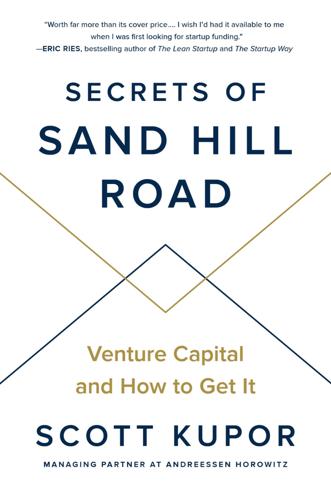
Secrets of Sand Hill Road: Venture Capital and How to Get It
by
Scott Kupor
Published 3 Jun 2019
And, in the LoudCloud case, we were not even talking about a lower valuation than the prior round, nor a modest step-up in valuation; those things can be debilitating for companies and often hard to recover from. Ultimately, the best story for you as a CEO is to be able to point to the proverbial “up and to the right” valuation graph. If your financing valuation is inconsistent with the success story you’ve been telling about the company, you’ve likely got some explaining to do. And even if the explanation is honest and truthful, it’s far better to never have to explain it in the first place. We’ve been talking so far about suboptimal, but still reasonable, situations whereby you are raising capital at a higher price than the last round, just less so than you or others might have anticipated.
…
Of course, private companies can also share their financials with potential customers (and being a public company in and of itself doesn’t mean that you can’t go bankrupt), but the financial discipline and visibility associated with being a public company can often be helpful in B2B selling. M&A currency—Technology companies build products. Those products have product cycles that hopefully go up and to the right for a long time. However, as with all things, what goes up often comes down, and a product’s growth when it gets to the end of a product cycle is no different. Thus, to maintain growth, technology companies need to either build or acquire new products to ride the wave of another product cycle.
…
Here’s the challenge: the underwriters are repeat players in the IPO process (as are the institutional investors who purchase IPO shares), whereas the company by definition likely only ever goes public once. Thus, the incentives for the underwriters are to price the IPO appropriately so that it trades well in the aftermarket; as I’ve said many times in this book already, the world is a much happier place when things go steadily up and to the right, and stock prices are no exception. The incentive for the company going public is of course to achieve a good long-term stock trajectory but also to raise as much money as possible with the least amount of dilution possible. After all, the company gets the proceeds from selling the IPO shares, but it does not benefit directly in the form of cash on its balance sheet with the subsequent appreciation of the stock price.
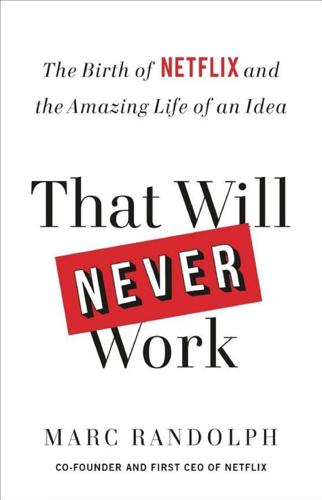
That Will Never Work: The Birth of Netflix and the Amazing Life of an Idea
by
Marc Randolph
Published 16 Sep 2019
As we turned the corner and passed the picnic tables that sat in a small courtyard to the side of the building, I finally figured it out. “By the way,” I said quietly, “if I haven’t already made it clear…you’re safe.” The look of relief on Joel’s face was immediate. He nodded and with a big smile said, “Up and to the right, boss. Up and to the right.” Barely a week later, we were once more gathered around the table in the conference room, but the crowd had swelled to include the entire management team. It was a Monday night, just a few minutes before 8:00, and people were still shuffling in from dinner, looking for places to sit or stand.
…
It didn’t happen often, but whenever we could, Joel and I liked nothing better than to sneak away at lunch to a booth at the Black Watch, the sole dive bar in Los Gatos, to carefully dissect our colleagues, our heads collapsing helplessly in laughter onto the beer-stained tables. “How’s it hangin’, boss?” Joel murmured now, barely looking up from his screen. “Up and to the right,” I said, giving the ritual response to our usual greeting. I flipped my head toward the stairs. “Let’s go for a walk.” Earlier that week, Reed, Barry, and I had brought all the Netflix directors into the cone of silence and shared our intentions with them. Since the majority of the employees in the company directly reported to this group, they had the best idea of who was actually getting things done, who was irreplaceable, and who could be easily done without.

Without Their Permission: How the 21st Century Will Be Made, Not Managed
by
Alexis Ohanian
Published 30 Sep 2013
It had only five words on it: YOU ARE A ROUNDING ERROR. Those five words still motivate me to this day. And that executive is still working in the ranks of Silicon Valley, still (I hope) fueling the fire inside more founders like me. You Can’t Make Progress When You’re Not Taking Steps It’s not all “up and to the right” (the direction of the line on a traffic chart that tracks soaring logarithmic growth) for startups. Most of them will never enjoy that kind of growth. Reddit certainly never did. Instead, you’ll have weeks when user growth (or customer growth, or another kind of growth) isn’t moving up as fast as you’d like, or not moving at all, or worse, going down.
…
Paul Graham, “Startup = Growth” Paul Graham, founder of Y Combinator, identifies the core defining characteristic of a startup as growth, which makes it fundamentally different from other types of businesses.1 No matter how successful a brand-new brick-and-mortar bakery is, it’s still not a startup because it’s limited by space and muffins and employees, which all require time and capital to grow. I love muffins, but what makes a startup special is that unlike a bakery, it can grow logarithmically (i.e., it can experience hockey-stick growth, up-and-to-the-right growth, and “Holy shit!” growth—okay, I made that last one up). That’s because of software. Write the code that solves a real problem and brings in revenue in the process, and investors want to invest in your company—even when it’s just two founders in a living room—because they know that in a year it could employ fifty people and earn millions in revenue.
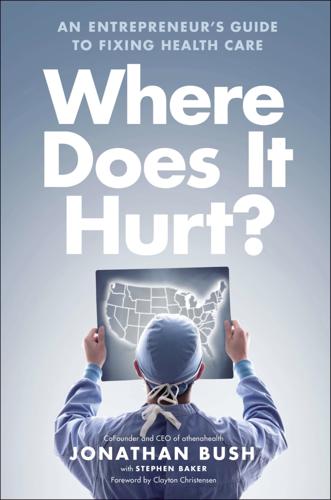
Where Does It Hurt?: An Entrepreneur's Guide to Fixing Health Care
by
Jonathan Bush
and
Stephen Baker
Published 14 May 2014
Then it starts to land customers, who come in for discounted milk and eggs. Revenue trickles in. Market share climbs. On the chart, the store moves up and to the right. Still, plenty of potential customers hold off. They stick with the old store. So the start-up innovates. It launches cooking classes on Tuesday nights. It brings in new lines of organic vegetables. Its reputation rises. More customers come in, revenue continues to grow. The line moves up and to the right. Then there comes a day when the old store closes shop. The upstart has won. Now look at its chart. Revenue is high and market share is dominant.
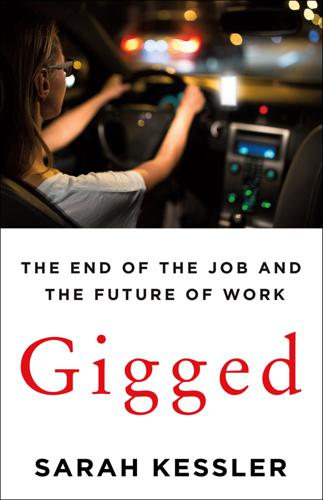
Gigged: The End of the Job and the Future of Work
by
Sarah Kessler
Published 11 Jun 2018
“The AFL-CIO Executive Council affirmed that working people in the gig economy share a single common designation: employees,” the largest federation of unions in the United States wrote on its blog four months after the Harris and Krueger paper was published.34 Above an excerpt of the statement on its website, the union posted a graph with three lines over time. One showed productivity, angling up and to the right. The other two represented average hourly compensation as estimated in two different ways, with both lines leveling off around 2005. There was no attempt to link the image to the text of the statement, but the point was clear: Companies are getting richer, and workers aren’t. The AFL-CIO believed a third category of workers would enable, not hurt, this trend.
…
“As long as the legal status is clear, there is no difference.” Before he left, his PR handler gave me a printed PowerPoint presentation that compared the gig economy to ecommerce. “Commerce has moved online and now services, including work, are too,” one of the smooth color-copied slides beamed. A graph showing freelancer earnings jutted straight up and to the right, pausing at $3.2 billion at the end of 2014. On the last slide, the presentation urged me to imagine what this meant for the future. “Commerce, still a small percentage of retail, is a huge market,” it said. “Imagine if only 2% of work moves online.” The impact of this shift might be a good thing for professional workers with in-demand skills.
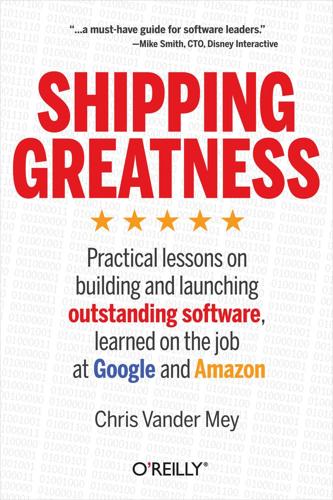
Shipping Greatness
by
Chris Vander Mey
Published 23 Aug 2012
You’ll use it to predict when you can ship. To make one, plot curves for each level of bug severity versus time. You will also want to plot a curve for the total number of bugs versus time. You can see a sample bug burndown chart in Figure 4-2. Figure 4-2. Sample bug burndown You should expect that your bug count will go up and to the right as you get nearer to code complete, and then down and to the right as you get closer to launch. The rate at which these bugs decline, or the slope of that line, is called the find/fix ratio. You can’t accurately predict your date without sizing individual bugs until you are fixing more bugs than you are finding, which means your find/fix ratio will be less than 1.
…
A relevant collection of metrics for these behaviors might be posts in seven days per seven-day-active-user and minutes spent on-site per seven-day active user. Eric Ries isn’t a big fan of these growth metrics in his book The Lean Startup (Crown Business). He calls them vanity metrics because you can puff up your chest, point to a chart that goes up and to the right, and say, “Look, we’re awesome! We’re growing!” even as your product is failing 90% of the incoming new users. It’s a fair point. This is why you need to look at metrics like conversion and engagement, among others. Nearly all web analytics packages will provide conversion metrics out of the box, and they will also tell you which features are used, which buttons are clicked, and by which groups of users.

Abolish Silicon Valley: How to Liberate Technology From Capitalism
by
Wendy Liu
Published 22 Mar 2020
Nick responded that he was just trying to do what was best for our company; he worried that we were moving too slowly. That was fair. I resolved to give it another shot. In July, we bonded over a popular comic graphing the ups and downs of the startup journey, depicting a trough of sorrow that would eventually give way to the promised land where everything would go up and to the right.4 We were sure that we would get there eventually. At the moment, though, we were still getting used to each other’s working styles and habits, and it was tough. The atmosphere in the room swung wildly between fever-pitch enthusiasm and dark, monotonous lows. We still didn’t have a functioning product, and our only contracts were of the noncommittal sort; all we had in our bank account was a few paltry thousand that we had won in a university-wide entrepreneurship competition.
…
(In those pre-Cambridge Analytica days, user privacy wasn’t really a big concern in our sector.) After a week of frenzied prototyping, I hit the jackpot: we could link people by looking at their friends. Once I got that up and running, the number of links we could identify exploded, and all the charts started to go up and to the right. While I was building this new feature, the others were running sales for our existing products. Our strategy had shifted into running reports on large consumer brands. We knew that we would lose most of these contracts to the smooth-talking sales teams of our better-funded competitors; still, I frequently stayed at the office past midnight doing free speculative work for multinational corporations in the hopes that one of them would take a chance with us.
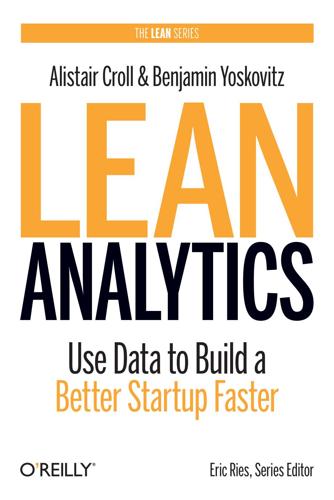
Lean Analytics: Use Data to Build a Better Startup Faster
by
Alistair Croll
and
Benjamin Yoskovitz
Published 1 Mar 2013
If you can’t answer that question, you probably shouldn’t worry about the metric too much. And if you don’t know which metrics would change your organization’s behavior, you aren’t being data-driven. You’re floundering in data quicksand. Consider, for example, “total signups.” This is a vanity metric. The number can only increase over time (a classic “up and to the right” graph). It tells us nothing about what those users are doing or whether they’re valuable to us. They may have signed up for the application and vanished forever. “Total active users” is a bit better—assuming that you’ve done a decent job of defining an active user—but it’s still a vanity metric.
…
They won’t tell you what to do—in the previous example, you could try changing your pricing, or your medium, or your wording. The point here is that you’re doing something based on the data you collect. Eight Vanity Metrics to Watch Out For It’s easy to fall in love with numbers that go up and to the right. Here’s a list of eight notorious vanity metrics you should avoid. Number of hits. This is a metric from the early, foolish days of the Web. If you have a site with many objects on it, this will be a big number. Count people instead. Number of page views. This is only slightly better than hits, since it counts the number of times someone requests a page.
…
In the earlier stages, it’s OK to run the business at a loss, or to give away accounts, or to issue refunds, or to let highly paid developers field support calls. Now, that has to change. Now, you’re not just building a product—you’re building a business. Metrics for the Revenue Stage Measuring revenue is easy enough, but remember that while raw revenue might be going “up and to the right,” revenue per customer is a better indicator of actual health. It’s a ratio, after all, and there’s a lot more you can learn from it. For example, if revenue is going up but revenue per customer is going down, it tells you that you’re going to need a lot more customers to continue growing at the same pace.
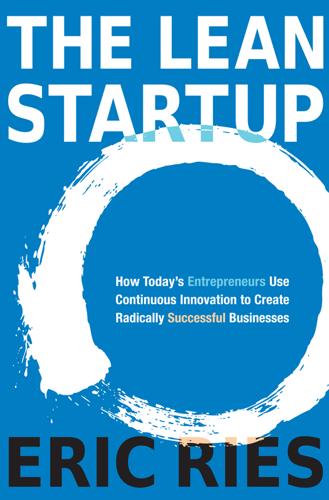
The Lean Startup: How Today’s Entrepreneurs Use Continuous Innovation to Create Radically Successful Businesses
by
Eric Ries
Published 13 Sep 2011
Was this early success related to the daily work of the product development team? In most cases, the answer was no; success was driven by decisions the team had made in the past. None of its current initiatives were having any impact. But this was obscured because the company’s gross metrics were all “up and to the right.” As we’ll see in a moment, this is a common danger. Companies of any size that have a working engine of growth can come to rely on the wrong kind of metrics to guide their actions. This is what tempts managers to resort to the usual bag of success theater tricks: last-minute ad buys, channel stuffing, and whiz-bang demos, in a desperate attempt to make the gross numbers look better.
…
But taken in aggregate, over the course of many months, we were seeing negligible changes in the overall drivers of our engine of growth. Even our activation rate, which had been the center of our focus, edged up only a few percentage points. We ignored the signs because the company was still growing, delivering month after month of “up and to the right” results. But we were quickly exhausting our early adopter market. It was getting harder and harder to find customers we could acquire at the prices we were accustomed to paying. As we drove our marketing team to find more customers, they were forced to reach out more to mainstream customers, but mainstream customers are less forgiving of an early product.

Brave New Work: Are You Ready to Reinvent Your Organization?
by
Aaron Dignan
Published 1 Feb 2019
So the funds, investment banks, media, and exchanges keep the stocks in motion. Economist Benjamin Graham, the father of value investing, once said, “In the short run, the market is a voting machine but in the long run, it is a weighing machine.” It appears that the voting machine is winning. Corporations want share prices to move too, just exclusively up and to the right. Executives are increasingly compensated in stock (in order to align their interests with those of shareholders), and so they all fall victim to a kind of collective quarterly myopia. They need to move the needle now, and that means revenue or earnings growth (preferably both). But investments in organic growth won’t mature fast enough to meet their needs.
…
There is, in the end, just as much leisure as on the other plan, but half the men are totally idle while half are still overworked. In this way, it is insured that the unavoidable leisure shall cause misery all round instead of being a universal source of happiness. Can anything more insane be imagined? The message has been clear for decades. We have to move from a model of eternal consumption (a chart that goes up and to the right forever) to a model that is regenerative and distributive. That doesn’t mean regressive socialism or state-controlled enterprise; it means embodying new goals. The problem isn’t free markets; it’s what we value. It’s the stories we tell ourselves. And unfortunately, we’re stuck in a loop with our economic, educational, and social operating systems.
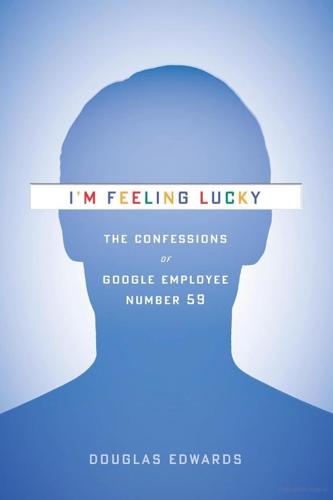
I'm Feeling Lucky: The Confessions of Google Employee Number 59
by
Douglas Edwards
Published 11 Jul 2011
Google as the leader in machine intelligence backed by all the world's data and massive computing power that learned as it went along. He had no small plans. Eric, on the other hand, was the voice of corporate pragmatism. These grand schemes would have to be paid for somehow. "Any chart that goes up and to the right is good," he assured us. And, "I like to watch cash in the bank." I got the impression he shared my concern for all the things that could go wrong. One fear I knew Eric had was of clowns. Specifically, the bozos who showed up at a company when it reached a certain size and bloated it with bureaucracy and bogged it down in mediocrity.
…
By the end of the next year, the amount of cash needed for the bonuses became unwieldy. Armored cars and shotgun-toting guards were needed to transport and watch over the funds until they could be distributed. There was more good financial news in 2003. The slides at TGIF showing our corporate financial health kept pointing up and to the right. The board split our stock when it hit ten dollars a share in June. Of course, we still faced competition, but we had momentum. Overture had bought the search engine company FAST in February to compete with us, but they were clearly too late to catch up on that front. We were not happy, but also not surprised, when Yahoo bought Overture in July for $1.3 billion.
…
News vans were parked in a row down the street outside, microwave antennas extended, satellite dishes up, and light-diffusing scrims positioned for on-camera interviews. A helicopter buzzed overhead as security guards stood watch from the parking lot entrances. Omid gave an encore performance of his greatest TGIF hits, with slides showing what we hadn't been allowed to see in months. Our revenue was so far up and to the right that the purple bars were pushing off the top of the screen. Eric spoke and reminded us not to be distracted by all that was about to happen. Not to let the company's culture change, not to get caught up in the hype. When the floor was opened for questions, Keith Kleiner, an early employee from operations, walked to the mic.
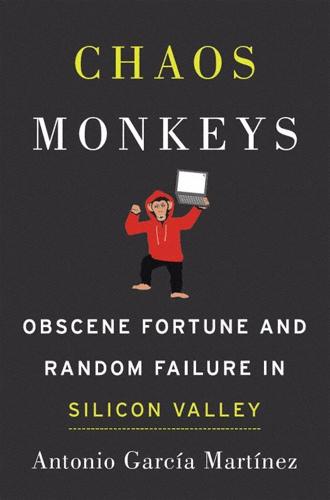
Chaos Monkeys: Obscene Fortune and Random Failure in Silicon Valley
by
Antonio Garcia Martinez
Published 27 Jun 2016
Those scorecards should obsess the product manager, should be the last thing he thinks of at night and the first thing he thinks of in the morning, and should be known to him, from memory, down to the decimal. Choose well what goes in that line graph, because whatever it is, a good product manager will slave away until it’s going up and to the right, whatever that figure represents. You make what you measure, so measure carefully. Once launched, Kitten became Facebook Ads’ sausage grinder, ingesting all sorts of user actions, from messages to posts to the contents of shared links, and turning them into targeting topics of various stripes.
…
Demoing the pussy filter to Sheryl. Epic! Dan limped along with the rest of his demo, and then it was my turn. After that high-water mark of incompetence, it was hard to fuck things up. I glided through the slides, lingering on the money shot: a plot of the number of ads reviewed versus human man-hours. The former was up and to the right (MOAR ADS!), the latter was flat (fewer expensive humans!). All was right with the Ads Review world. I drowsed through the other presentations and bolted at the first opportunity. Ads Review was but one of the security teams at Facebook charged with the monumental task of protecting one-fourth of the Internet globally—which is what Facebook represents—from scammers, hucksters, pornographers, sexual predators, violent criminals, and every kind of human detritus.
…
Then everyone wonders how such a confirmed genius could have possibly failed, and ruminates on the transience of talent. That day will arrive for Facebook too. It some ways, it already has; Facebook just bought its way out of it. In 2012, a photo-sharing app called Instagram was able to show Zuckerberg something he’d never seen before: a user growth curve—relentlessly up and to the right—that resembled Facebook’s own meteoric early growth. After negotiations spanning all of a weekend, Facebook snapped it up for $1 billion, thwarting Twitter’s own Jack Dorsey, who had reputedly been wooing Instagram’s CEO, Kevin Systrom, for months. In 2014, another app could boast a similarly fear-inducing growth curve, and with an even higher number of users.
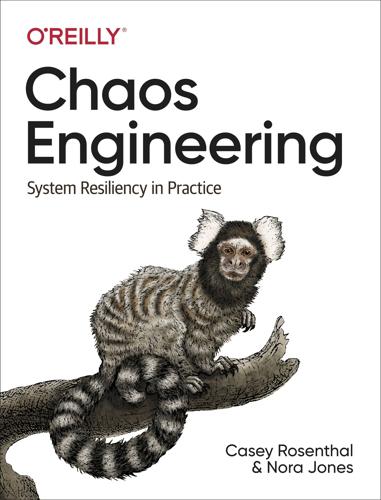
Chaos Engineering: System Resiliency in Practice
by
Casey Rosenthal
and
Nora Jones
Published 27 Apr 2020
Using the method for each disproved hypothesis just described, we could project the “saved” hypothetical SPS impact due to discovering these vulnerabilities in ChAP safely, before they manifested in Production and had the chance to affect all of the customers. Summing these “SPS saved” over time gave a chart that showed this metric going up and to the right every month, provided that at least one hypothesis was disproved. This showed that ChAP was continually adding value. There is an implied congruence between this metric and the point of the practice in the first place. This established the ROI of ChAP as part of the Chaos Engineering program at Netflix.
…
Example CMM map Mapping your organization’s position could help you understand your context within the discipline, and could suggest areas of investment to make the next leap. The ultimate goal of any of this is to return value to the organization. As seen in the map (Figure 15-1), moving up and to the right is where Chaos Engineering provides the most value. Highly sophisticated, pervasive Chaos Engineering is the best proactive method for improving availability and security in the software industry. 1 Ali Basiri et al., Chaos Engineering (Sebastopol, CA: O’Reilly, 2017). Part V. Evolution By definition, a human cannot understand a complex system well enough to make accurate predictions about its output.

How I Built This: The Unexpected Paths to Success From the World's Most Inspiring Entrepreneurs
by
Guy Raz
Published 14 Sep 2020
Her co-founder and now husband, David, put an even finer point on it: “We didn’t spend any money on advertising.” It turns out they didn’t need to. The following year, 1998, The Knot clocked $1 million in revenue. The year after that, QVC put in $15 million to help the site expand its suite of products. Within three years, the growth trajectory of The Knot was unmistakably up and to the right, largely propelled by word of mouth. Ten years after The Knot hit its stride, Alli Webb experienced the same kind of growth with her blowout business (which would become Drybar) before she even had a bar to do the drying in. She started it in 2008 as an in-home service called Straight-at-Home by posting on a Yahoo!
…
Now, there are probably some things Tristan could have done differently or better when he met with investors to make the process move more smoothly. Maybe his pitch deck could have been better—his first version was in PowerPoint and it did use clip art—or he could have spoken more directly to their self-interests. “I sold the hope and the dream,” he said. But maybe he should have just talked dollars and cents. “My growth chart was up and to the right,” he noted. Maybe he could have talked slower or faster, more or less. Or maybe there was nothing he could have done. Maybe he did everything right. Who knows? I certainly don’t. And like I said, that’s not what this chapter is about. It’s about understanding how to think about venture capital.

Scikit-Learn Cookbook
by
Trent Hauck
Published 3 Nov 2014
Since we're using the confusion matrix, we can get the accuracy from the trace of the confusion matrix divided by the overall sum: >>> n_estimator_params = range(1, 20) >>> confusion_matrixes = {} >>> for n_estimator in n_estimator_params: rf = RandomForestClassifier(n_estimators=n_estimator) rf.fit(X[training], y[training]) confusion_matrixes[n_estimator] = confusion_matrix(y[~training], rf.predict(X[~training])) 137 www.it-ebooks.info Classifying Data with scikit-learn # here's where we'll update the confusion matrix with the operation we talked about >>> accuracy = lambda x: np.trace(x) / np.sum(x, dtype=float) >>> confusion_matrixes[n_estimator] = accuracy(confusion_matrixes[n_estimator]) >>> accuracy_series = pd.Series(confusion_matrixes) >>> import itertools >>> from matplotlib import pyplot as plt >>> f, ax = plt.subplots(figsize=(7, 5)) >>> accuracy_series.plot(kind='bar', ax=ax, color='k', alpha=.75) >>> ax.grid() >>> >>> >>> >>> ax.set_title("Accuracy by Number of Estimators") ax.set_ylim(0, 1) # we want the full scope ax.set_ylabel("Accuracy") ax.set_xlabel("Number of Estimators") The following is the output: 138 www.it-ebooks.info Chapter 4 Notice how accuracy is going up for the most part. There certainly is some randomness associated with the accuracy, but the graph is up and to the right. In the following How it works... section, we'll talk about the association between random forest and bootstrap, and what is generally better. How it works… Bootstrapping is a nice technique to augment the other parts of modeling. The case often used to introduce bootstrapping is adding standard errors to a median.

The Optimist: Sam Altman, OpenAI, and the Race to Invent the Future
by
Keach Hagey
Published 19 May 2025
In my first years at the Journal, when I would often get to the office early to cover companies’ earnings reports, I always marveled at how nothing in the companies’ press releases ever seemed to move the stock; investors were instead focused on the forward-looking “guidance” that the company’s CFO would give in mumbly jargon during the call with analysts. In the world of venture capital–backed private startups that Altman grew up in, this near-shamanistic ability to lead a boardroom full of VCs in a group visualization of a startup’s revenue going up and to the right was the whole game. And no one was better at it than Altman. In Altman’s vision of the future, AGI will inevitably become an “extension of our wills” without which “we just don’t feel like ourselves.” Students will get free or very cheap AI tutors that will make them “smarter and better prepared than anybody today.”
…
When Pao resigned in July 2015 during a mutiny by Reddit users over the firing of a popular employee, Huffman returned to lead Reddit. The entire process was a mess, but Altman never wavered from his belief that Reddit could be one of the great internet sites. “He is always thinking 100-times growth, always keeping us focused on, ‘It’s got to be up and to the right,’ ” Sauerberg said. Nearly a decade later, Reddit went public on the New York Stock Exchange, and the 8.7 percent that Altman’s Hydrazine acquired through the Series B and subsequent purchases became worth more than $600 million.22 (The long-delayed IPO happened only after Reddit signed deals to license its data to train AI models like OpenAI’s.)
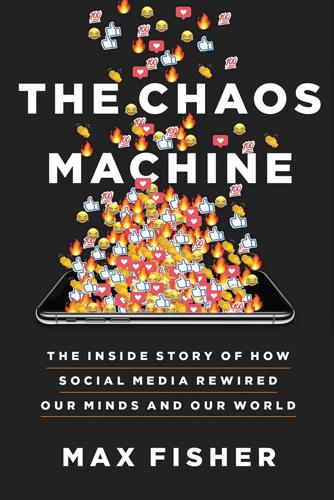
The Chaos Machine: The Inside Story of How Social Media Rewired Our Minds and Our World
by
Max Fisher
Published 5 Sep 2022
When the presentations started, each founder was granted two minutes to pitch the roomful of heavyweight investors. The ideas—a cloud computing service, an investment site, a travel-booking site, a meme aggregator—ranged widely, but each had the same business plan. “They put up a graph showing their traction going up and to the right,” DiResta recalled. “Almost none of them even had axes. It was just a squiggle going up and to the right. I was watching this going, ‘What the fuck is going on?’” DiResta specialized in hardware technology, as Intel had. Companies had to invest in overhead, plan their manufacturing and logistics, and identify customers, all before shipping the first unit.
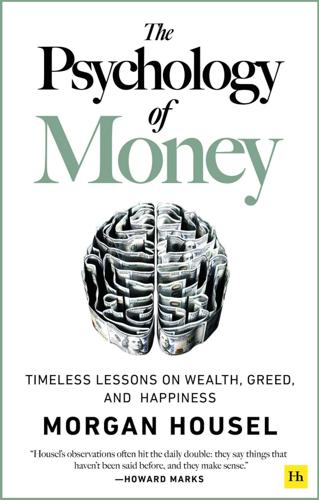
The Psychology of Money: Timeless Lessons on Wealth, Greed, and Happiness
by
Morgan Housel
Published 7 Sep 2020
But that’s incomplete. Sensible optimism is a belief that the odds are in your favor, and over time things will balance out to a good outcome even if what happens in between is filled with misery. And in fact you know it will be filled with misery. You can be optimistic that the long-term growth trajectory is up and to the right, but equally sure that the road between now and then is filled with landmines, and always will be. Those two things are not mutually exclusive. The idea that something can gain over the long run while being a basketcase in the short run is not intuitive, but it’s how a lot of things work in life.
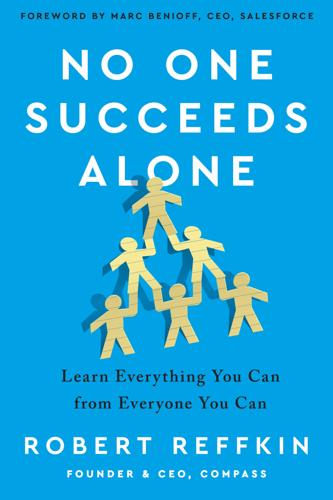
No One Succeeds Alone
by
Robert Reffkin
Published 4 May 2021
We began building technology and executing our strategy as quickly as possible. And we had a ton of fun along the way. Everything was clicking. We were helping real customers find great apartments to rent. We had revenue coming in within eight months, which is rare for venture-funded start-ups. Enough of our metrics were going “up and to the right” that we were able to make pretty charts that got our investors excited about our growth. Less than a year later, we raised a much larger Series A funding round. It felt like we were succeeding. The team thought we were on the right track. After all, our investors had just demonstrated their confidence in us and our strategy with more funding.
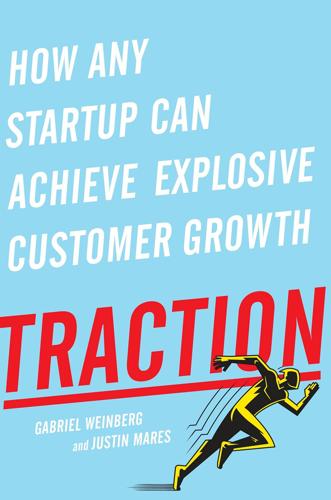
Traction: How Any Startup Can Achieve Explosive Customer Growth
by
Gabriel Weinberg
and
Justin Mares
Published 5 Oct 2015
So if you’re in enterprise software, [initial traction] may be two or three early customers who are paying a bit; if you’re in consumer software the bar might be as high as hundreds of thousands of users. You can always get more traction. The whole point of a startup is to grow rapidly. Getting traction means moving your growth curve up and to the right as best you can. Paul Graham, founder of startup accelerator Y Combinator, puts it like this: A startup is a company designed to grow fast. Being newly founded does not in itself make a company a startup. Nor is it necessary for a startup to work on technology, or take venture funding, or have some sort of “exit.”
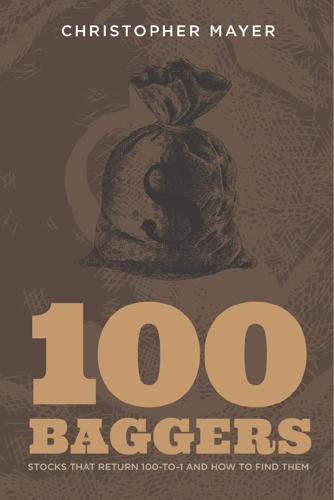
100 Baggers: Stocks That Return 100-To-1 and How to Find Them
by
Christopher W Mayer
Published 21 May 2018
In at least a few instances, these moves were back to back. Now, you know the business of Monster did not change anything like that much in any of those months. We’re talking about a maker of beverages. You can also see on the far right-hand side that even with all the movement, the stock marched up and to the right most of the time. Think about all those times, however, when the stock took a 20+ percent dive. How often would you have been watching it, day after day? How likely is it you would have sold it? Maybe after a 20 percent drop, you’d have decided to get out at the next opportunity. Then you’d have sold after a good month.
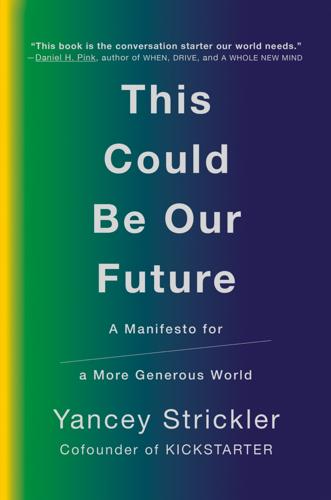
This Could Be Our Future: A Manifesto for a More Generous World
by
Yancey Strickler
Published 29 Oct 2019
CHAPTER SEVEN BENTOISM EXPANDING THE UNIVERSE When I picture the self-interest that dominates the world today, I imagine a simple graph. On the x-axis is time. On the y-axis is some value—money, power, units sold—that’s exponentially growing. In business and tech this is called a “hockey stick” graph. A chart where whatever is being measured is growing so fast, the line goes up and to the right. This is the ultimate best-case outcome for any decision. But this idea of “making it” is just a sliver of what’s out there. While we so intently focus on maximizing our self-interest, there’s a larger universe that we miss. When we take a step back, this bigger picture starts to emerge.

WTF?: What's the Future and Why It's Up to Us
by
Tim O'Reilly
Published 9 Oct 2017
When Mark says it is time for Facebook to shift from a focus on friends and family to “the social infrastructure for community—for supporting us, for keeping us safe, for informing us, for civic engagement, and for inclusion of all,” you can see the promise of a virtuous circle of engagement. Where engagement seems to be the wrong fitness function for traditional ad-supported media, engagement is exactly the metric we want going up and to the right if we are looking to strengthen not only friendship and families but society as a whole. That is a very promising direction. If Facebook is indeed able to make progress in strengthening forms of positive engagement that actually create communities with true social capital, and is able to find an advertising model that supports that goal rather than distorts it, that would likely have a greater impact than any direct attempt to manage fake news.
…
E-commerce sites like Taobao, eBay, Etsy, and the Amazon marketplace for third-party sellers can play a meaningful role in reinvigorating local economies. They should all measure themselves by the success of their sellers, report on it religiously, and aim to have the metrics for those marketplace participants, not just themselves, go up and to the right. After all, without the sellers, a marketplace is an empty shell. Small businesses are the bedrock of the economy, providing nearly half of all private-sector employment. Policy makers must understand the role of platforms in bringing small business into the twenty-first century, measure their economic impact, and craft tax policies to encourage the creation of broader economic value, not just the value companies extract for themselves.
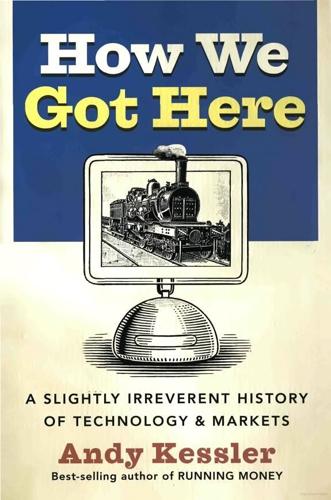
How We Got Here: A Slightly Irreverent History of Technology and Markets
by
Andy Kessler
Published 13 Jun 2005
As the industrial age dies and the digital age takes over, expect many more blow-ups. The Internet Bubble of 1999 was just a first step. But if, unlike anywhere else in the world, the U.S. makes sure its markets are structured to enable the formation of risk capital, the arrow, while jagged, will be up and to the right over the long run. Entrepreneurs and their ideas will have the proper funding to become a reality. *** So just as steam driven textile mills provided cheap and comfortable clothes, and microprocessors provided cheap and powerful computers, new technology is displacing old ways of doing business.
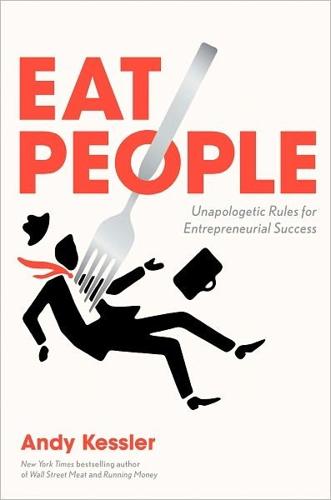
Eat People: And Other Unapologetic Rules for Game-Changing Entrepreneurs
by
Andy Kessler
Published 1 Feb 2011
Without that “increasing living standards” thing, you and I would still be living in caves, chasing squirrels and shoveling shit and dying young from minor infections. Increasing standards of living doesn’t happen automatically. It’s not a gift from heaven. Someone has to invent the future. But how? HOW DO YOU find the next big thing? How do you find things that go up and to the right and keep going up and up and up? How do you find companies to work for or to invest in that will let you create some real wealth? And how do you do well by the world? Thirty years ago, as I started my so-called career, not a single person told me that computers and technology would get so cheap that they would practically end up being given away in boxes of Cheerios.

Always Day One: How the Tech Titans Plan to Stay on Top Forever
by
Alex Kantrowitz
Published 6 Apr 2020
The rebuilt apps put Facebook on a much better footing, but Ondrejka wasn’t done. Amid this development process, Ondrejka came back to Zuckerberg with some more feedback. He drew a curve showing how quickly Facebook’s users were adopting mobile, and where the company’s mobile usage was heading—up and to the right. Further change was necessary. “I looked at the growth curve and extrapolated it into the future with a mild acceleration. And it was one of those curves you look at and go, ‘Well, there’s no way we’re going to hit that.’ But if we’re even close to that curve, mobile is going to be more than half of everything pretty quickly,” Ondrejka said.

HTML5 Canvas
by
Steve Fulton
and
Jeff Fulton
Published 2 May 2013
To do this, select a value for gravity, such as .1, and then add that value to the y velocity of your object on every call to drawScreen(). For this example, let’s simulate a ball with a radius of 15 pixels being shot from a cannon that rests near the bottom of the canvas. The ball will move at a speed of 4 pixels per frame, with an angle of 305 degrees. This means it will move up and to the right on the canvas. If we did not apply any gravity, the ball would simply keep moving on that vector until it left the canvas. (Actually, it would keep moving; we just would not see it any longer.) You have seen the code to create an effect like this already. In the canvasApp() function, we would create the starting variables like this: var speed = 4; var angle = 305; var radians = angle * Math.PI/ 180; var radius = 15; var vx = Math.cos(radians) * speed; var vy = Math.sin(radians) * speed; Next we create the starting point for the ball as p1, and then we create a dynamic object that holds all the values we created for the ball object: var p1 = {x:20,y:theCanvas.height-radius}; var ball = {x:p1.x, y:p1.y, velocityx: vx, velocityy:vy, radius:radius}; If we want to add gravity to the application, we would first create a new variable named gravity and set it to a constant value of .1: var gravity = .1; Next, in the drawScreen() function, we apply this gravity value to the ball object when it is drawn to the canvas (ball.velocityy += gravity).
…
We then call mvTranslate(), passing the locations on the x-, y-, and z-axes to draw the cube. To rotate the cube, we call a function named mvPushMatrix(), and later mvPopMatrix(), which is similar to how we called context.save() and context.restore() when rotating objects on the 2D canvas. The call to mvRotate() then makes the cube rotate from the center, tilted up and to the right: loadIdentity(); mvTranslate([0, 0.0, −10.0]); mvPushMatrix(); mvRotate(rotateCube, [0, .5, .5]); Next, we draw the cube by binding the buffers that hold the vertices and color information that we set up earlier for the cube’s sides. We then draw each side, made up of two triangles each: webGLContext.bindBuffer(webGLContext.ARRAY_BUFFER, cubeVertexPositionBuffer); webGLContext.vertexAttribPointer(shaderProgram.vertexPositionAttribute, cubeVertexPositionBuffer.itemSize, webGLContext.FLOAT, false, 0, 0); webGLContext.bindBuffer(webGLContext.ARRAY_BUFFER, cubeVertexColorBuffer); webGLContext.vertexAttribPointer(shaderProgram.vertexColorAttribute, cubeVertexColorBuffer.itemSize, webGLContext.FLOAT, false, 0, 0); webGLContext.bindBuffer(webGLContext.ELEMENT_ARRAY_BUFFER, cubeVertexIndexBuffer); setMatrixUniforms();webGLContext.drawElements(webGLContext.TRIANGLES, cubeVertexIndexBuffer.numItems, webGLContext.UNSIGNED_SHORT, 0); mvPopMatrix(); Finally, we increase the rotateCube variable so that the next time drawScreen() is called, the cube will be updated with a new angle.

Architects of Intelligence
by
Martin Ford
Published 16 Nov 2018
My fundamental belief behind all of this is that we need to radically up-level ourselves as a species. AI is moving very quickly, and what the future of AI holds is anyone’s guess. The expert opinions are across the board. We don’t know if AI is growing on a linear curve, an S curve, an exponential curve, or a punctuated equilibrium, but we do know that the promise of AI is up and to the right. The rate of our improvement as humans is flat. People hear this and say that we’re hugely improved over people 500 years ago, but we’re not. Yes, we understand greater complexity, for example, more complex concepts in physics and mathematics, but our species generally is exactly the same as we were thousands of years ago.
…
Yes, we understand greater complexity, for example, more complex concepts in physics and mathematics, but our species generally is exactly the same as we were thousands of years ago. We have the same proclivities and we make the same mistakes. Even if you were to make the case that we are improving as a species, if you compare it to AI, humans are flatlining. If you just simply look at the graph and say AI is up and to the right, humans might be a little bit to the right. So the question is, how big is that delta going to be between AI and ourselves when we begin to feel incredibly uncomfortable? It’s going to just run by us, and then what are we as a species? It is an important question to ask. Another reason is based on the concept that we have this impending job crisis with AI.

Dataclysm: Who We Are (When We Think No One's Looking)
by
Christian Rudder
Published 8 Sep 2014
The farther toward the right, the more popular it is with everyone else. Adding a few more words to the chart will give you a sense of how the geometry translates before I zoom out to the full corpus: I’ve added a diagonal, yet again, to show parity in the data. The words near the line are important to everyone equally. And the farther up and to the right the words go, the more universally important they are. But remember, we’re not looking for universals. We’re looking for particulars. We want to know what is special to the people we’re considering: here, white guys. For that we need to look to the upper left: the farther in that direction a word appears, the more often white men use it, and the less often everyone else does.

Uncanny Valley: A Memoir
by
Anna Wiener
Published 14 Jan 2020
Despite its size and age, the company was already well regarded and legitimate, marked to become a unicorn. We were hurtling toward a billion-dollar valuation. Our revenue soared every month. We were winning, and we would be rich. “This company is going to be worth a gajillion dollars,” the account manager said, taking a bite of potato salad. “We’re ripping up and to the right. We have the best and the brightest. We’re on an immutable path toward success. We’re all just fucking ready to give whatever needs to be given to make this thing happen. All anyone is asking is for us to pour our hearts and souls into this unstoppable behemoth.” He drained his iced coffee.

Alone on the Wall: Alex Honnold and the Ultimate Limits of Adventure
by
Alex Honnold
and
David Roberts
Published 2 Nov 2015
I remembered the odd move here and there, but most of it felt like I was discovering the sequences for the first time. There’s no question, though, that my impulsive push on Rainbow Wall had everything to do with what was going on with Stacey. About halfway up the route, there’s a stretch of easy pitches, ranging from 5.4 to 5.8, that wanders up and to the right through ramps to a cozy perch on Over the Rainbow Ledge. Here, my mind turned back to “real” life, with all the angst I had carried with me from the Valley, but fortunately, that “down” interlude was fleeting. Soon enough, I was facing the crux tenth pitch. I was about 750 feet off the ground.

The Life and Loves of a He Devil: A Memoir
by
Graham Norton
Published 22 Oct 2014
My sister and I picked our way through the long grass towards the edge of the sea and an old pine tree that looked like a pregnant pensioner with its twisted branches and swollen trunk. At its base we found an ancient stone bench and we sat down. In front of us a cloudless blue sky and a panoramic view across Dunmanus Bay towards Mizen Head; to the left, the pier with a few trawlers tied up; and to the right a small cove edged by trees leaning into the winds of winters past. It was paradise. I turned to my sister and we both agreed that the exorbitant price of the house was worth it for that bench and the view alone. Trying to buy the property turned out to be a very Irish story indeed. I put in an offer.
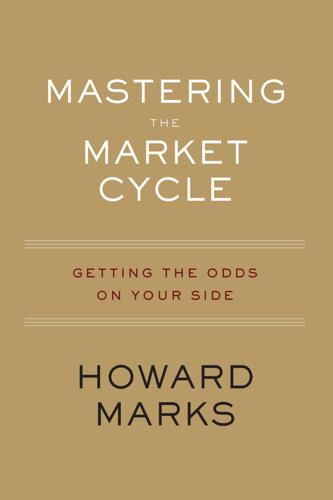
Mastering the Market Cycle: Getting the Odds on Your Side
by
Howard Marks
Published 30 Sep 2018
Soon after arriving at Chicago, I was exposed to a graphic that provided much of the foundation for the new theory of investment, and that has served as the starting point for much of my thinking and writing ever since. This graphic has become ubiquitous in the investment world in the time since my first exposure to it fifty years ago. Its essence lies in the fact that the line slopes up and to the right, indicating a positive relationship between risk and return. This is usually misinterpreted, in my view, as meaning “riskier assets produce higher returns,” and thus “if you want to make more money, the answer is to take more risk.” This formulation cannot be correct, since if riskier assets could be counted on to produce higher returns, they by definition wouldn’t be riskier.
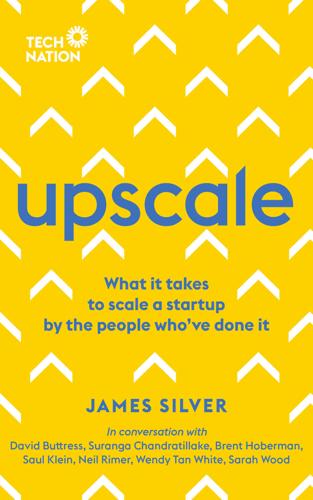
Upscale: What It Takes to Scale a Startup. By the People Who've Done It.
by
James Silver
Published 15 Nov 2018
So at each stage you’re measuring your progress by showing how far along the trajectory towards your big vision you’ve travelled. Very few companies ever do this in a linear fashion. Everyone hits bumps in the road. Occasionally they’ll hit on something else and then they’ll have to retrofit their story. The overall trend of traction, though, is up and to the right.’ Why is the big vision so crucial? Because it has a direct bearing on the size of market you could ultimately own and on the product roadmap and the technology you build today, she says. Get it wrong and it will box you into a smaller business, leaving - often fatally - little room for manoeuvre.

No Ordinary Disruption: The Four Global Forces Breaking All the Trends
by
Richard Dobbs
and
James Manyika
Published 12 May 2015
Looking around the world today, there is ample reason for pessimism, especially when it comes to geopolitics. Living through a searing experience like the financial crisis of 2008 or high youth unemployment can leave significant scar tissue. But while pessimists have surely had their share of days in recent years, it’s important to note that the long-term trend of so many indicators points up and to the right. In 1930, as the Great Depression spread around the world, the great British economist John Maynard Keynes boldly predicted that, one hundred years on, progressive countries’ standard of living would be between four and eight times higher than it was at the time. Despite the Great Depression, an enormously destructive world war, and the Cold War, the higher end of his optimistic expectation has turned out to be our reality today.
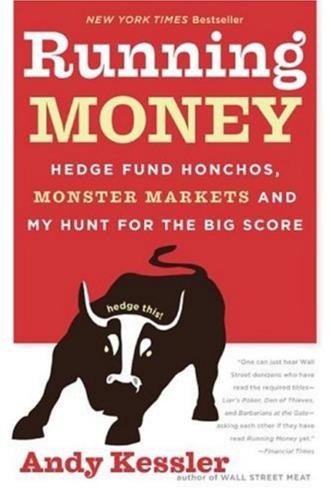
Running Money
by
Andy Kessler
Published 4 Jun 2007
While this is a better conference than most, techno-geeks ought to hire stand-ins to deliver their talks. “And here is a slide of bandwidth deliverable by packetized LANs and WANs.” My eyelids got heavy, so I was barely able to make out the chart. Dating back to 1975, it had a straight line up and to the right, with labels that read: > 1 megabit per second, 1975 > 10 megabits per second, 1983 > 100 megabits per second, 1991 > 1 gigabit per second, 1999 > 10 gigabits per second, 2007 > 100 gigabits per second, 2015 > 1 terabit per second, 2023 I’ve seen charts like this before, but they never cease to amaze me.

More From Less: The Surprising Story of How We Learned to Prosper Using Fewer Resources – and What Happens Next
by
Andrew McAfee
Published 30 Sep 2019
Clark’s graph, reproduced on the next page, puts England’s population on the horizontal axis and a measure of personal prosperity on the vertical axis.IV It has one data point for each decade between 1200 and 1800 and connects these data points with a line (I’ve alternated the shading and marked the start of each century to make it easier to follow the line). If this line moved steadily up and to the right, it would mean that as the centuries passed England’s population became both larger and more prosperous. But this is not at all what happened. Instead, for hundreds of years after 1200 the line moved back and forth in an arc between the upper left and lower right of the graph—between, in other words, a state of low population and relatively high prosperity and the opposite: a state of large population but low affluence.
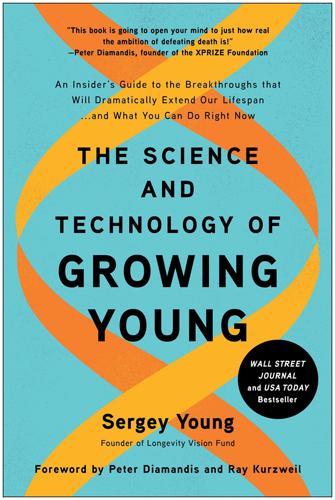
The Science and Technology of Growing Young: An Insider's Guide to the Breakthroughs That Will Dramatically Extend Our Lifespan . . . And What You Can Do Right Now
by
Sergey Young
Published 23 Aug 2021
Will access to longevity-enhancing health care become the civil rights flashpoint of the year 2090? Instead of “Medicare for all,” will the rallying cry become “Immortality for all”? Here’s the thing: for all the legitimate concerns about economic disparity and for all the worries one can have about the pitfalls of the future, the economic trendline is clearly up and to the right. Most people on our planet are better off today than they were a few decades ago—and not by a little. Wealth disparity in premodern times was orders of magnitude worse than it is in the present. The inflation-adjusted income of the average person on Earth is 4.4 times greater than it was in 1950.31 Between 1981 and 2013, China lifted 850 million people out of poverty, reducing its poverty rate from 63 percent to less than 2 percent today.32 Global poverty declined over the same period from 29 percent to 12 percent!
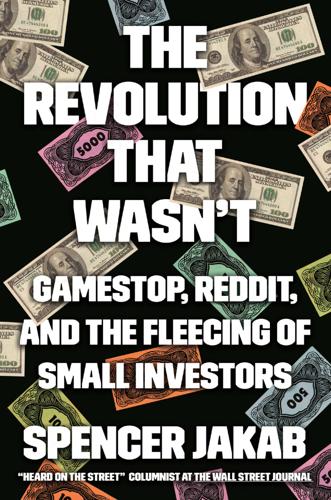
The Revolution That Wasn't: GameStop, Reddit, and the Fleecing of Small Investors
by
Spencer Jakab
Published 1 Feb 2022
The mostly young, mostly new investors who were helping to turn some stocks into stonks weren’t monolithic, though. Some saw a number like the $1,000 price that GameStop shares supposedly were going to hit, according to so many posts on WallStreetBets, and thought that there was some basis for it that better-informed people in the crowd had figured out. Many others just saw a line going up and to the right and figured they would be able to hop on and then hop off the ride before it stopped rising—the greater fool theory. Seth Mahoney, the young Robinhood customer and longtime WallStreetBets member, fell into the latter camp. He says he would scan social media constantly in 2020 and especially in early 2021 and jump on a stock he knew almost nothing about other than the hunch that the crowd was starting to push it higher.

Beautiful Visualization
by
Julie Steele
Published 20 Apr 2010
He describes the progress that a nation is making with the assistance of a long pointer stick; it is quite clear where to look. This reduces confusion. It also helps that many of the two-dimensional scatterplots he uses have unambiguously “good” and “bad” directions: it is good for a country to move toward a higher GDP and a longer life expectancy (i.e., to go up and to the right), and bad to move in the opposite direction (down and to the left). With Rosling’s sure hand guiding the watcher’s gaze, the visualization is very effective. But if a temporal scatterplot were incorporated into a standard spreadsheet, would it be useful for people who were trying to learn about the data?
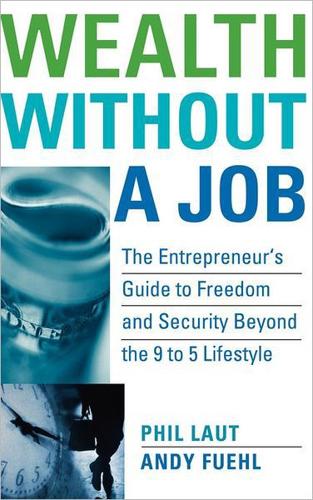
Wealth Without a Job: The Entrepreneur's Guide to Freedom and Security Beyond the 9 to 5 Lifestyle
by
Phil Laut
and
Andy Fuehl
Published 12 Sep 2004
To you, the book you are reading is ink, paper, and a cover; as such, it would be easier for you to sell than for us, assuming equal sales ability. When I (PL) began selling Money Is My Friend, the high degree of personal content made it very uncomfortable for me to hear no from a prospective customer. Selling becomes more emotionally intense and therefore more difficult for beginners as you move up and to the right on the diagram. The farther you move from the lower left corner, the tougher it gets. Emotional intensity makes selling difficult because it draws your awareness inside, distracting you from what customers are telling you. How to Apply These Emotional Dynamics to Learning to Sell There are generally two ways to learn anything.

The New New Thing: A Silicon Valley Story
by
Michael Lewis
Published 29 Sep 1999
It was only after he determined that this was somehow impossible that he went ahead and did whatever he wanted. Now he was doing his best to please Bank Julius Baer. Yet he could not fathom how the bank's questions applied to him. He arrived at the first category, marked "Risk/Reward." A simple-minded graph with an arrow pointing up and to the right illustrated the principle that the more risk you take with your money, the more you stand to gain or lose. In the past ten months Clark had "lost" $600 million simply by holding Page 164 on to his shares in Netscape. "If they only knew," he said. The Swiss banker chuckled unhappily. Clark remained straight-faced.
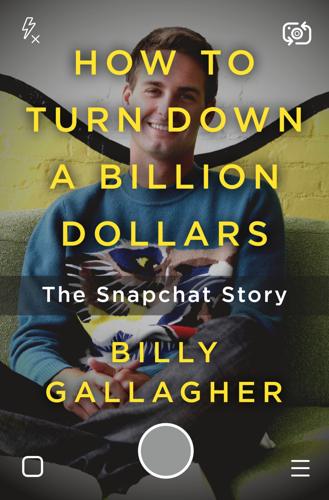
How to Turn Down a Billion Dollars: The Snapchat Story
by
Billy Gallagher
Published 13 Feb 2018
We always run the risk that overall froth in the market declines, and we end up filling a leaking bucket—doing everything right to “prove it” while macro valuations decline. I’m not that valuation-focused anyway, so this matters less to me. If we think we are going to change the market’s perspective through revenue generation, I think that is quite dangerous to assume. Right now it’s all about users and growth and engagement, which we know will go up and to the right for a while. Once you introduce revenue, that becomes the dominant paradigm. Take subscriptions: if you got ~2% monthly active user conversion to subscription at $1.99 for the balance of the year with no churn, which would be pretty good, it’s $25–30 million post Apple/Google tax.2 It’s going to take a while to come up with a cluster of monetization schemes that get you to the point where you want to be judged on revenue/earnings multiples.
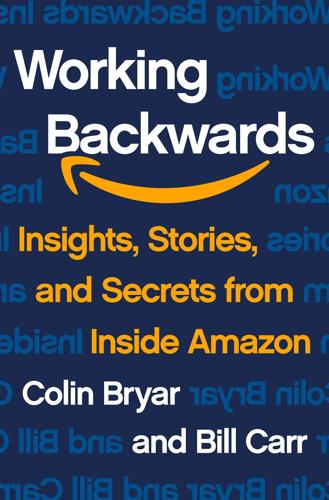
Working Backwards: Insights, Stories, and Secrets From Inside Amazon
by
Colin Bryar
and
Bill Carr
Published 9 Feb 2021
The discussions became less useful and ultimately distracting—just another argument that people needed to win. Second, some of these overly complicated functions combined seven or more metrics, a few of which were composite numbers built from their own submetrics. When graphed over time, they might describe a trend line that went up and to the right, but what did that mean? It was often impossible to discern what the team was doing right (or wrong) and how they should respond to the trend. Also, the relative weightings could change over time as business conditions changed, obscuring historic trends altogether. We eventually reverted to relying directly on the underlying metrics instead of the fitness function.

Ghost Road: Beyond the Driverless Car
by
Anthony M. Townsend
Published 15 Jun 2020
At left, on the vertical scale (or y axis), the price of delivery increases as we go up. Along the bottom, on the horizontal scale (the x axis), as we move from left to right the total amount of shipping consumed increases. The two solid curves show the world as we know it. The supply curve (S1) rises up and to the right, indicating the degree to which shipping companies like UPS, FedEx, and the postal service are willing and able to increase capacity as prices rise. Demand (D) responds in the opposite way—when the price falls, consumption increases. Where the two curves meet, the market reaches equilibrium (E1), and the prevailing price (C1) and level of supply (F1) are set.
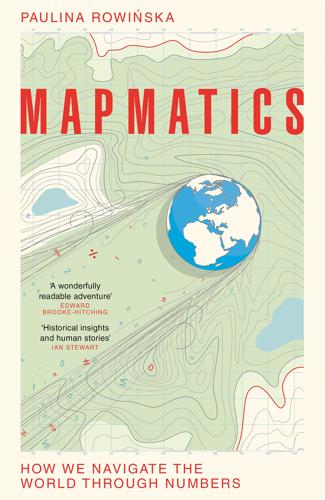
Mapmatics: How We Navigate the World Through Numbers
by
Paulina Rowinska
Published 5 Jun 2024
Imagine an ant walking along a line segment. To describe her position with respect to the beginning of the segment, the ant would need one number: how far she walked from the beginning. The same ant would need two numbers to describe her position in reference to a chosen corner of a sheet of paper – how far she walked up and to the right, for example. That’s why a line has one dimension and a flat square two. But this definition applies only to well-behaved objects such as smooth lines and surfaces. Let’s take our ant to Dover, the coastal English town famous for its stunning cliffs. After a big little feast of fish and chips, the ant starts walking clockwise along the British coast, with a tiny pedometer on one of her wrists.

The Big U
by
Neal Stephenson
Published 2 Jan 1984
He gave the lieutenant a battlefield promotion to Captain. He wanted to stay and continue to watch, but it had been a long day; he was tired, and for a moment his mind seemed to stop entirely as he stood by the exit. Then came again the creeping sense of Leakage, impossible to ignore; his head snapped up and to the right, and, speaking across the dimensional barrier, Klystron the Impaler told him to go to dinner. Klystron the Impaler was only Klystron the Impaler when he was in a Magical universe. The rest of the time he was Chris the Systems Programmer—a brilliant, dashing, young, handsome terminal jockey considered to be the best systems man on the giant self-contained universe-hopping colony, Plexor.

An Optimist's Tour of the Future
by
Mark Stevenson
Published 4 Dec 2010
I’m reminded of something Bruce Ward said to me in the Australian outback: ‘Keeping things simple is never easy.’ The president points to the clock indicating that our time is nearly up. I decide in the minute or two I have left to do a bit of advocacy for Klaus Lackner and his carbon scrubbing technology. As I explain the potential of Klaus’s work I can see Nasheed’s brain working. His eyes go up and to the right. He leans forward. How much money does Klaus need? (Nasheed tells me he is hoping to put aside a hundred million dollars each year for investment in carbon neutral projects). I repeat the figure Klaus gave me of twenty million dollars to take his technology to the next stage – a design that can be rolled out worldwide.
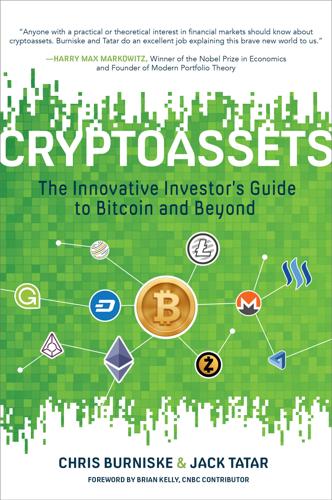
Cryptoassets: The Innovative Investor's Guide to Bitcoin and Beyond: The Innovative Investor's Guide to Bitcoin and Beyond
by
Chris Burniske
and
Jack Tatar
Published 19 Oct 2017
Figure 13.16 Woo’s Law in Action: Bitcoin users double every 12 months Source: http://www.coindesk.com/using-google-trends-estimate-bitcoins-user-growth/ Consider too, the number of addresses on a blockchain. For Bitcoin, an address is where bitcoin is sent, and therefore the more addresses, the more locations that are holding bitcoin. However, a company like Coinbase may have only a handful of addresses, which serve to store bitcoin for millions of users. Thus, while this metric shows a nice up-and-to-the-right trend, it’s only part of the picture. Figure 13.17 shows the hyper growth of Ethereum’s unique address count. With Ethereum, an address can either store a balance of ether, like Bitcoin, or it can store a smart contract. Either denotes an increase in use. Figure 13.17 The growth of Ethereum’s unique addresses Data sourced from Etherscan.io Number of Transactions Figures 13.18 and 13.19 show the number of transactions using Bitcoin and Ethereum’s blockchains respectively.
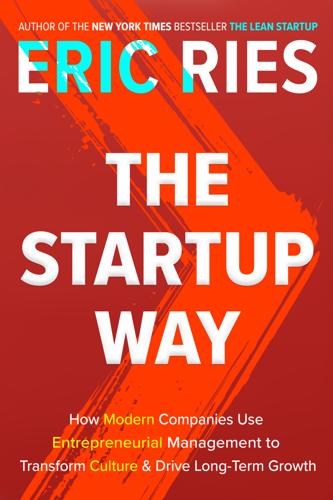
The Startup Way: Making Entrepreneurship a Fundamental Discipline of Every Enterprise
by
Eric Ries
Published 15 Mar 2017
What aspects of the timeline are determined by the laws of physics versus GE’s internal processes? (From our discussion in Chapter 4, you’ll recognize these as leap-of-faith assumptions.) The team proceeded to present the currently approved business case for the Series X, including a revenue forecast with graph bars going up and to the right with such velocity that the chart showed this as-yet-unbuilt engine making literally billions of dollars a year for GE as far into the future as thirty years hence. Beth Comstock recalls: “It was like all the business plans we see, with a hockey stick that is going to grow to the moon in five years, and everything is going to be perfect.”

Genius Makers: The Mavericks Who Brought A. I. To Google, Facebook, and the World
by
Cade Metz
Published 15 Mar 2021
The thirty-four-year-old Ng, a tall man who spoke in something close to a whisper, had prepared a line graph on his laptop as a way of explaining his idea, but when Page finally arrived and sat down, Ng decided that pulling a laptop from his bag during lunch with the Google CEO was somehow the wrong thing to do. So he described the idea with his hands. The line graph, he showed, went up and to the right. As a neural network analyzed more and more data, it grew more and more accurate, whether it was learning sights, sounds, or language. And what Google had was data—years of photos, videos, voice commands, and text gathered through services like Google Search, Gmail, and YouTube. He was already exploring deep learning at his lab at Stanford.

Nobody's Fool: Why We Get Taken in and What We Can Do About It
by
Daniel Simons
and
Christopher Chabris
Published 10 Jul 2023
For instance, if 10 people in your town are newly diagnosed with Covid-19 each day, then after 10 days there will be 100 more cases. The trend is linear at a rate of 10 per day; if we drew a graph with the date on the x-axis and the total number of cases on the y-axis, we would have a straight line going up and to the right. Now imagine instead that there were 10 new Covid-19 cases diagnosed on one day. On the next day, there were 11 new cases, on the third day 12, and then 13 and 14 on days 4 and 5, respectively. We would see the number of new cases increasing every day, but it would be harder to intuit that there would be a total of 145 cases after 10 days and over 200 by day 13.

Boom: Bubbles and the End of Stagnation
by
Byrne Hobart
and
Tobias Huber
Published 29 Oct 2024
But, as we’ll show, these bubbles, which are largely driven by financialization, low yields, and the lack of productive investment opportunities, need to be distinguished from innovation-accelerating bubbles. 4 “Safetyism” could here be defined as the West’s cultural bias toward suppression of risk-taking and submission to a quasi-absolute form of safety that attempts to regulate and control every sphere of social interaction and techno-economic relation. 5 An example of this view is articulated by Steven Pinker, who makes the claim that global trends of health, prosperity, safety, peace, knowledge, and happiness are going up and to the right. See Pinker, Enlightenment Now: The Case for Reason, Science, Humanism, and Progress (London: Penguin, 2018). 6 For an overview of the spiritual, cultural, and civilizational stakes involved in the perennial conflict between techno-optimism and techno-pessimism, see Marc Andreessen’s “The Techno-Optimist Manifesto,” A16z, October 16, 2023, https://a16z.com/the-techno-optimist-manifesto/. 7 For most of history, there was no expectation of infinite techno-scientific progress.

The Upstarts: How Uber, Airbnb, and the Killer Companies of the New Silicon Valley Are Changing the World
by
Brad Stone
Published 30 Jan 2017
At the time, the global economy was cratering, unemployment was skyrocketing, and Graham’s advice was more sobering than usual. At one point he warned Airbnb and the other fifteen startups in the program that investors were spooked, so they should all make sure they had a graph in their presentations with a single line racing up and to the right, demonstrating increasing profits. The Airbnb founders, who hardly had any revenue, let alone growing profits, mocked up that hypothetical chart and taped it onto the bathroom mirror at Rausch Street. Despite the economic meltdown, the founders were determined to make the most of their turn of fortune.
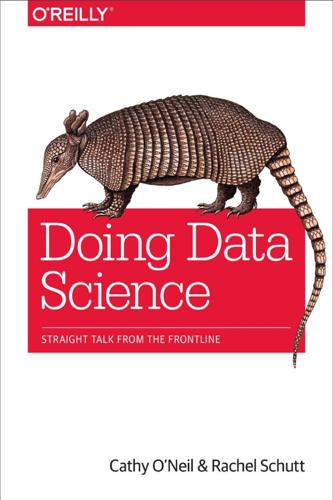
Doing Data Science: Straight Talk From the Frontline
by
Cathy O'Neil
and
Rachel Schutt
Published 8 Oct 2013
A graph of the cumulative PnLs of two theoretical models This generalizes to any model as well—you plot the cumulative sum of the product of demeaned forecast and demeaned realized. (A demeaned value is one where the mean’s been subtracted.) In other words, you see if your model consistently does better than the “stupidest” model of assuming everything is average. If you plot this and you drift up and to the right, you’re good. If it’s too jaggedy, that means your model is taking big bets and isn’t stable. Why Regression? So now we know that in financial modeling, the signal is weak. If you imagine there’s some complicated underlying relationship between your information and the thing you’re trying to predict, get over knowing what that is—there’s too much noise to find it.
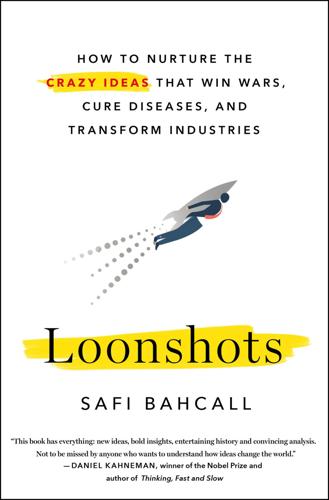
Loonshots: How to Nurture the Crazy Ideas That Win Wars, Cure Diseases, and Transform Industries
by
Safi Bahcall
Published 19 Mar 2019
At low speeds or when there are few cars on the highway, above and to the left of the dashed line (#1 in the diagram below), traffic flows smoothly. When the traffic flow crosses the transition line at either higher car densities (#2) or faster car speeds (#3), small disruptions grow exponentially into a jam. The dashed transition line slopes up and to the right because braking distances get longer as cars travel faster, meaning a larger average separation between cars is required to avoid a jam. When the average separation between cars falls below the transition line (1 → 2) or the average speed rises above it (1 → 3), smooth flow suddenly jams Traffic engineers use these ideas to design better highways.
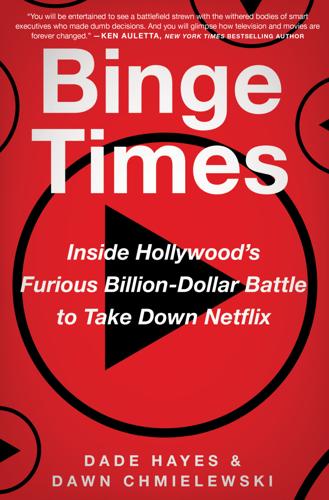
Binge Times: Inside Hollywood's Furious Billion-Dollar Battle to Take Down Netflix
by
Dade Hayes
and
Dawn Chmielewski
Published 18 Apr 2022
Domestic rights packages in Europe and elsewhere for soccer and other sports have gone down markedly over the past year due to a mix of factors, including tighter regulation, fewer bidders, and a surprising, commonsense course correction of long-standing rights holders deciding to offer less to renew. The favorable deal climate is a big reason why DAZN is refocusing its attention outside of the U.S. Pitaro sees more changes coming to the rights landscape. “For certain sports, it is time for a reset,” he said. “Everything can’t be up and to the right. Maybe a decade from now, things could get back into growth mode when these over-the-top services have proven their value, but . . . in a world where we are seeing cord cutting accelerate, it’s a much more challenging environment to be operating in. And, at a certain point, the industry is going to have to accept that.
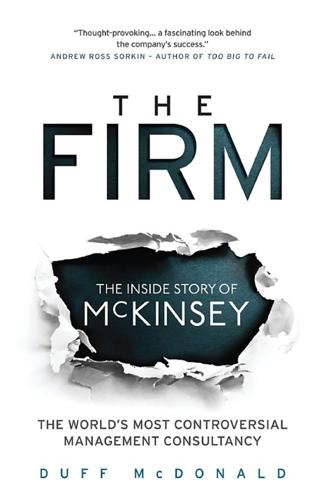
The Firm
by
Duff McDonald
Published 1 Jun 2014
Some managing directors of McKinsey enjoyed a rising economic tide as the backdrop to their tenure—Marvin Bower, for example, and Rajat Gupta in the late 1990s. Ron Daniel had the 1980s boom at the end of his term, but when he took over in 1976, neither the U.S. nor the global economy could be called healthy. This was the era of Jimmy Carter and stagflation. How did Daniel keep McKinsey headed up and to the right of the growth chart? One major way was by embracing the idea of the “transformational relationship” and encouraging consultants to push it to their clients. McKinsey no longer pitched itself as a project-to-project firm; from this point forth, it sold itself to clients as an ongoing prodder of change, the kind a smart CEO would keep around indefinitely.

The Peripheral
by
William Gibson
Published 23 Oct 2014
“Close your eyes. Count down from fifteen. About ten, should be a wobble.” “Wobble?” “What she called it. Keep your eyes closed, keep counting down to zero. Then open ’em. We see you open ’em, it hasn’t worked.” “Okay,” she said, “but not until I say go.” Holding her head still, she looked up and to the right: the window, in the wall beside her. Up: the ceiling, tubes of lights glowing in polymer. Toward her feet: Burton’s display, Edward. To her left: Macon, the closed door behind him. “Go,” she said, closing her eyes. “Fifteen. Fourteen. Thirteen. Twelve. Eleven. Ten.” Pop. That color like Burton’s haptics scar, but she could taste it inside her teeth.

Super Pumped: The Battle for Uber
by
Mike Isaac
Published 2 Sep 2019
His thinking on keeping his seat on the council didn’t last long. In the span of a week, more than 500,000 people deleted their Uber accounts entirely, not counting the incalculable others who simply deleted the app from their phones. Uber’s all-important ridership growth curves—for years always hockey-sticking up and to the right—started turning downward. Kalanick began to sweat. Lyft, at that point running out of money and on the verge of surrender, benefitted enormously from the backlash. People began to ditch Uber and switch over to Lyft. (Protest felt good, but people still needed to be able to call a car sometimes.)
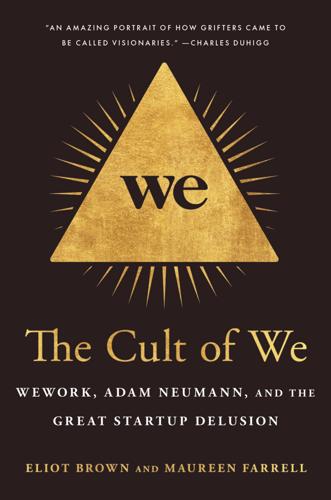
The Cult of We: WeWork, Adam Neumann, and the Great Startup Delusion
by
Eliot Brown
and
Maureen Farrell
Published 19 Jul 2021
At the same time, numerous highly hyped startups were beginning to miss the superambitious targets they’d used to lure investors. Suddenly companies like the cloud storage startup Box and the payment processor Square were going public at valuations that were lower than when they last raised money from investors—a concept nearly verboten in startup land, where everything was supposed to be “up and to the right.” Anything else was a crack in the facade of success. Some were raising concerns about the amount of money poured into the sector, with the occasional voice even openly calling it a bubble. Among those was Bill Gurley, the Benchmark partner who invested in Uber. Gurley was a highly respected figure in Silicon Valley, a lumbering former analyst with a Texas twang who warned on his well-read blog that “late-stage investors, desperately afraid of missing out on acquiring shareholding positions in possible ‘unicorn’ companies, have essentially abandoned their traditional risk analysis,” he wrote.

Nothing Personal: My Secret Life in the Dating App Inferno
by
Nancy Jo Sales
Published 17 May 2021
I had to throw the towel up in the air three times after showering or I was afraid something terrible would happen to me. I had to brush my teeth in time to the tune of “Turkey in the Straw” (Why this song? I have no idea) or someone would find out about the things Roger was doing to me at school. I had to have everything in my room pointing up and to the right, or I would fail a test or get in trouble somehow. I still do these things, sometimes, when I’m feeling particularly anxious. A shrink once told me, “You felt like you needed to be in control, because things were happening to you that were beyond your control.” And just when I was starting to wonder if maybe I should tell someone about all this, because it was all getting pretty strange, my body changed on me again.

Makers at Work: Folks Reinventing the World One Object or Idea at a Time
by
Steven Osborn
Published 17 Sep 2013
And then we have to sort all the inventory back onto the credit card the following day and ask them to raise the limit.” It is just this constant sort of cycle. But it worked out, and now we have the fortune of being in control of our own destiny. We enjoy being in the pilot seat. Osborn: What are some of the challenges you’ve had as part of the business? I’m sure it hasn’t always been just up and to the right? I’m sure you guys have had some bumps along the way. Seidle: Oh my goodness. That’s an hour-long question right there. If you ever get the chance, come out to Boulder and come take a tour. I’d love to show you all the crazy. Some of the bumps along the way—one of them, we still refer to as the “cash death” of 2010.
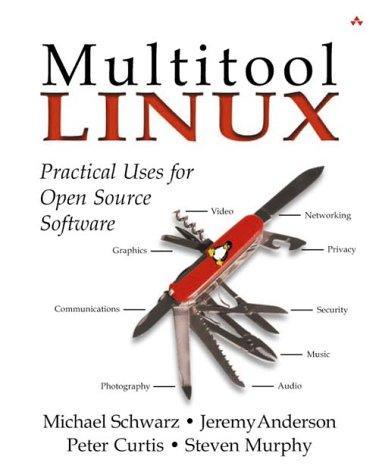
Multitool Linux: Practical Uses for Open Source Software
by
Michael Schwarz
,
Jeremy Anderson
and
Peter Curtis
Published 7 May 2002
This is because it is a large set of patches and source additions to the Apache source code tree. Because of this, it must match the Apache source code version you are using, other wise it just won't work. The first thing we will do is to apply the source code patches from mod_ssl to Apache. The only directive we have to tell mod_ssl is where the Apache source code tree is, which is up and to the right: $ cd mod_ssl-2.7.1-1.3.14 $ ./configure --with-apache=../apache_1.3.14 $ cd .. Be sure to watch for errors in this step. Any errors will almost surely mess up the rest of the steps here. If you do find errors, make sure that your mod_ssl version matches your Apache version. It should apply cleanly.

Exploding the Phone: The Untold Story of the Teenagers and Outlaws Who Hacked Ma Bell
by
Phil Lapsley
Published 5 Feb 2013
The digit 7 that you dialed caused a pair of metal contacts to twitch upward seven times, so fast that it seemed to make a brrrp noise as it went. While waiting for your next digit, it rotated to the right, connecting your telephone line to the next idle Strowger switch it could find. That next switch would then accept whatever digit you dialed next, again twitching a mechanism inside up and to the right. This mechanized ballet continued until you had dialed all the digits of your number; your last digit connected you from the last Strowger switch in the switching train to the actual pair of wires running to the telephone you wanted to call. The key thing about the Strowger system was that every pulse your telephone sent down the line caused something to happen in the switch—physically, immediately, and directly.
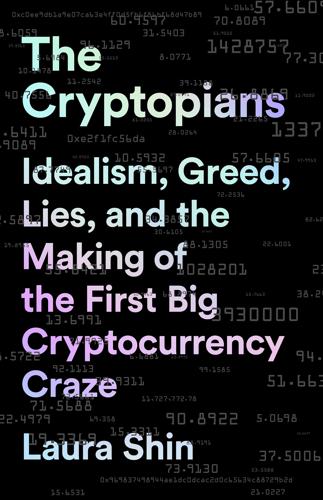
The Cryptopians: Idealism, Greed, Lies, and the Making of the First Big Cryptocurrency Craze
by
Laura Shin
Published 22 Feb 2022
ON APRIL 21, the DAO’s website, at daohub.org, launched.12 The homepage read, “THE DAO IS,” followed by an electric-tangerine cursor. Moved by an invisible hand, it finished the thought: THE DAO IS REVOLUTIONARY. THE DAO IS AUTONOMOUS. THE DAO IS REWARDING. THE DAO IS CODE. Underneath sat a line graph showing an overall trend: up and to the right. The homepage said, “The DAO’s Mission: To blaze a new path in business organization for the betterment of its members, existing simultaneously nowhere and everywhere and operating solely with the steadfast iron will of unstoppable code.”13 By the time of launch, the fine print at the bottom would read, “This website is owned by the DAO community, it is managed by the DAOhub team and hosting is generously offered by dao.link Sarl, Switzerland.”

Caliban's War
by
James S. A. Corey
Published 6 Jun 2012
He still had the two joysticks, but his motions were small, calm. A tap, and the gravity under Prax changed, his couch shifting under him by a few centimeters. Then another tap and another shift. The heads-up display showed a tunnel through the vacuum outlined in a blue and gold that swept up and to the right, ending against the side of the turning ring. Prax looked at the mass of data being sent to Alex and said, “Why fly at all? Couldn’t the ship just use this data to do the docking itself?” “Why fly?” Alex repeated with a laugh. “’Cuz it’s fun, Doc. Because it’s fun.” The long bluish lights of the windows in Tycho’s observation dome were so clear Prax could see the people looking out at him.
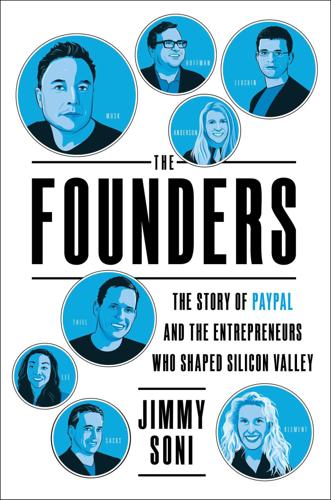
The Founders: The Story of Paypal and the Entrepreneurs Who Shaped Silicon Valley
by
Jimmy Soni
Published 22 Feb 2022
Those accounts were limited at first—denominated only in US dollars and allowing customers to send money only to people in their own countries and to the US. But they existed, and they generated revenue for the company, with a $0.30 levee and 2.6 percent on each payment. By the end of 2001, international transactions accounted for almost 15 percent of the company’s total revenue, and the team saw foreign user and transaction charts that moved up and to the right. As dollar-based transactions shifted into multi-currency ones, that growth accelerated, paving the way for a global expansion that led to PayPal operating in two hundred countries and twenty-five currencies. * * * Not all new market expansion was going to be traditional, and PayPal didn’t march headlong into every potentially lucrative market.
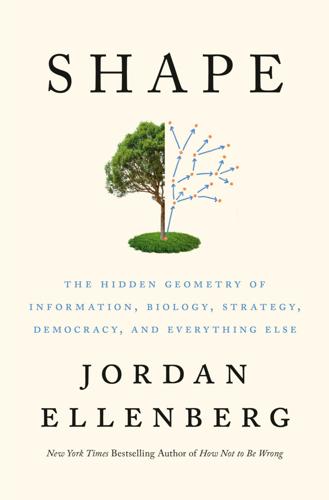
Shape: The Hidden Geometry of Information, Biology, Strategy, Democracy, and Everything Else
by
Jordan Ellenberg
Published 14 May 2021
You know the little picture on the credit card machine at the gas station that shows you how to orient the card when you swipe it? That picture is useless to me. It’s beyond my mental capabilities to translate that flat drawing into a three-dimensional action. Every single time, I have to run through each of the four possibilities—magnetic stripe up and to the right, magnetic stripe up and to the left, magnetic stripe down and to the right, magnetic stripe down and to the left—until the machine consents to read my card and sell me some gas. And yet geometry is felt, generally, to be at the heart of what’s required for real figuring in the world. Katherine Johnson, the NASA mathematician now well-known as the hero of the book and movie Hidden Figures, described her early success at the Flight Research Division: “The guys all had graduate degrees in mathematics; they had forgotten all the geometry they ever knew. . . .
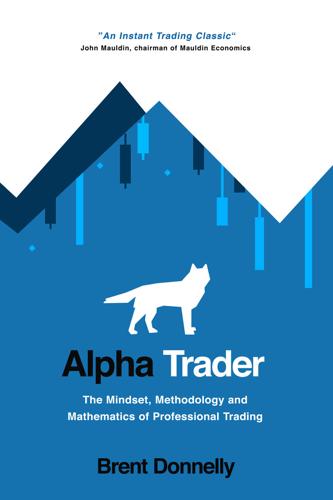
Alpha Trader
by
Brent Donnelly
Published 11 May 2021
This means the average income difference between a person with an IQ score in the normal range (100) and someone in the top 2% of society (130) is currently between $6,000 and $18,500 per year. Figure 3.1 from data blogger Jonatan Pallesen shows the relationship between IQ and income using 10 years of data. You can see the relationship slopes up and to the right and the very high incomes are much more common in the top right quadrant than in the top left quadrant. If we are defining success as income, IQ is an important predictor. Figure 3.2 offers a nice clear visual. Pallesen breaks IQ into three groups (low, middle, high) to show how the median and right tails of the income distribution relate to IQ: Source: https://jsmp.dk/posts/2019-06-16-talebiq/ IQ also correlates with most other measures of success like mortality, longevity, crime and (somewhat obviously) academic grades: I included a chart of academic grades vs.
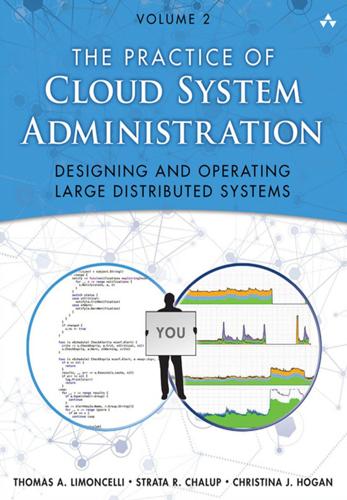
The Practice of Cloud System Administration: DevOps and SRE Practices for Web Services, Volume 2
by
Thomas A. Limoncelli
,
Strata R. Chalup
and
Christina J. Hogan
Published 27 Aug 2014
For example, if the memory use of a server over time, which usually remains nearly constant, changes after a particular software release, it is something to investigate. If the usage went up and developers did not expect it to, there may be a memory leak. If usage went down and developers did not expect it to, there may be a bug. Counters are best viewed as rates. A counter, visualized in its raw form, looks like a line going up and to the right. If the rate over time is calculated, we will see either acceleration, deceleration, or an equilibrium. Some visualizations are less useful and, in fact, can be misleading. A pie chart of disk space used and unused is a common dashboard fixture that we find rather pretty but pointless. Knowing that a disk has 30 percent space remaining isn’t useful without knowing the size of the disk.

Patriot Games
by
Tom Clancy
Published 2 Jan 1987
The black metal sights were nearly useless in the dark, though, and what he had to do Twenty yards. The first burst has to be right on, Jack, right the hell on Ryan took half a step to his right and dropped to one knee. He brought the weapon up, placing the front sight low and left of his target before he held the trigger down for a four-round burst. The gun jerked up and to the right as the bullets left, tracing a diagonal line across the target's outline. The man dropped instantly from sight, and Ryan was again dazzled, this time by his own muzzle flashes. Shorty had dived to the ground at the sound. "Come on!" Ryan yanked Cooley up and threw him forward, but Jack stumbled in the sand and recovered to see that the terrorist was indeed running for the boat-where there was a gun to turn against them all!
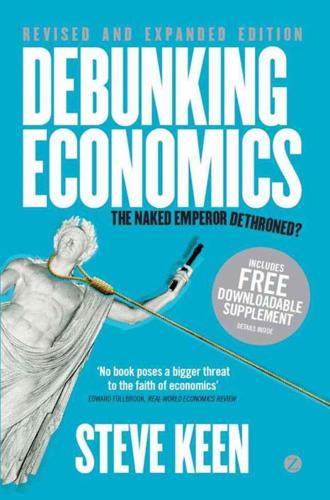
Debunking Economics - Revised, Expanded and Integrated Edition: The Naked Emperor Dethroned?
by
Steve Keen
Published 21 Sep 2011
So the most desirable investment is one that gives a very high return with very little risk. Consequently, rather than being drawn to show that more of both goods is better, these indifference curves are drawn to show that more return and less risk is better. With standard goods, the consumer prefers more of both, so the desirable direction to move in on the indifference map is up and to the right – which means you feel better as you get more of both commodities. But with return and risk as the ‘goods,’ the desirable direction is more return and less risk. Sharpe drew expected return on the horizontal axis and risk on the vertical, so the most desirable direction was to the right – which gave you more return – and down – which gave you less risk.

Cuba: An American History
by
Ada Ferrer
Published 6 Sep 2021
The front page included a letter addressed to “The People of Cuba and the Revolutionary Government.” Written by members of the newspaper’s staff, it announced their takeover of the paper and their decision to shutter the publication for good. A phrase in Latin ended their missive: “Requiescat In Pace, DIARIO DE LA MARINA.” Rest in Peace. Appropriately, just up and to the right of those words was a funeral announcement—a funeral for the newspaper itself. “Cubans! Today we will bury 128 years of ignominy.” The funeral procession began in Old Havana outside the offices of the newspaper and proceeded, coffin and all, to the university. One participant later wrote that a hundred thousand people turned out for the funeral; the US embassy estimated the crowd at several thousand.

Seeking SRE: Conversations About Running Production Systems at Scale
by
David N. Blank-Edelman
Published 16 Sep 2018
Forster The distributed datastore is down. Writes are failing on all replicas and reads are timing out. The SRE on call checks the monitoring; there are no clues as to the cause, yet it’s clear this key production service is in a bad state: the errors and latency graphs are the only ones going up and to the right. Revenue is being lost. The on-caller declares a production incident. The VP of engineering storms in, demanding to know what’s going on. The other SREs in the room just laugh. Why? Because this is Incident Manager, a game designed to teach incident response skills and teamwork, and the current player just drew a bad card.

Debt of Honor
by
Tom Clancy
Published 2 Jan 1994
"What about their AWACS?" he asked the EWOs. "I've got emissions on one, nine o'clock, very weak. If you keep us in the weeds, we'll be okay." "Get out the barf bags, guys." To the loadmaster: "Ten minutes." "Ten minutes," the Air Force sergeant announced in the back. Just then the aircraft lurched up and to the right, dodging around the first coastal mountain. Then it dropped down rapidly again, like a particularly unpleasant amusement-park ride, and Julio Vega remembered once swearing that he'd never subject himself to anything like this again. It was a promise that had been broken many times, but this time, again, there were people on the ground with guns.